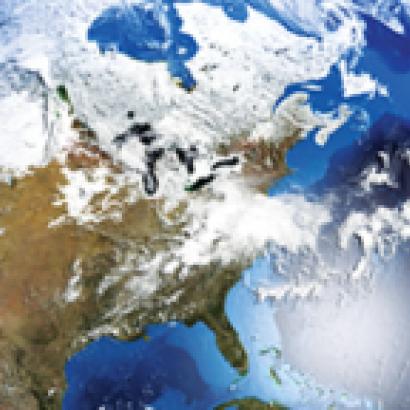Plenty of changes have appeared in the nuclear arena in the past seven decades. Numbers of nuclear weapons have risen sharply and have just as sharply declined. The perceived utility of nuclear weapons, once thought to be ideal for the conduct of coercive diplomacy, has shrunk to the point where deterrence against their use is almost their sole purpose. The technology of the nuclear components of the weapons advanced spectacularly for many years but has now leveled off. The types of weapons perceived to be needed for deterrence have changed from “city-busting” multi-megaton weapons to lower-yield weapons.
There have been constants, too, in the nuclear arena, primarily on the political-psychological side of the equation. One of them is that progress toward ending reliance on nuclear weapons for defense purposes has depended on factors other than a cost-benefit analysis of the weapons themselves. These factors include national leadership attitudes and the state of the relationships between nuclear-armed nations. One of the basic nuclear constants has been public confidence in the ability of nuclear weapons to preserve peace and to protect the safety of the homeland. British Prime Minister Winston Churchill’s dictum of 1955 is still broadly accepted: “…safety will be the sturdy child of terror, and survival the twin brother of annihilation.” Churchill described the practice of nuclear deterrence as a “sublime irony.” So it must have seemed. But Churchill envisaged an end to reliance on nuclear deterrence, that it would someday “reap its final reward,” enabling “tormented generations to march forth serene and triumphant from the hideous epoch in which we have to dwell.”
The dilemma that “tormented generations” face now is how to judge that nuclear deterrence has reaped its final reward, how to decide that whatever utility it had as an immediately usable instrument of unprecedented destruction to the planet has ended. The task of resolving this dilemma requires a review of the experiences of successive American presidents as they sought to control the dangers of nuclear weaponry. This review will help us understand why the trajectory of constantly growing stockpiles took a sharp turn in the late 1980s. Some of the assumptions made about nuclear deterrence need serious reconsideration. We ought to understand why.
Nuclear deterrence, in the form of an assured ability to inflict massive damage on an enemy’s homeland even after absorbing an initial nuclear attack by that enemy, has been a constant in American strategic doctrine almost since the beginning of the US-Soviet nuclear competition. Nuclear deterrence has been assumed to “work” under different levels of nuclear forces and very different doctrines for employment of nuclear weapons. What the threat of a nuclear strike actually deterred was always a matter of conjecture and had to remain so. Nuclear weapons have never been used after 1945 and never at all in a two-sided nuclear war. All the certitudes about the effectiveness of nuclear deterrence are based on theory, not on practice.
Another constant—the upward trajectory in the numbers of nuclear weapons held by the United States and the Soviet Union—endured for about a quarter of a century. That trajectory then made a sharp transition to a downward trend. Today the world’s nuclear arsenals contain only about one-fourth of the numbers they held in 1986. Why did this happen?
What Causes Basic Change?
In their foreword for a 1997 publication of Stanford University, George Shultz and William Perry wrote: “History has shown that Reykjavik was a true turning point. Three major treaties between the United States and the Soviet Union were negotiated by the end of 1992; they resulted in substantially reduced levels of nuclear weapons. That happened as the Cold War was ending and, as the Russians say, it was no coincidence. A dramatic change in the relationship between the Soviet Union and the United States made it possible. A readiness, both in Washington and in Moscow, to open a new chapter in their relationship prepared the way.”
So the answer as to why the nuclear trajectory reversed course, quite simply, is that eliminating nuclear weapons is not achievable through a process that focuses exclusively on nuclear weapons, whether that process be a pragmatic step-by-step approach or a comprehensive blueprint. “Creating the conditions for a world without nuclear weapons,” as the UN Security Council has put it, is clearly the right way to think about it.
Validating the Theory of Change
The validity of this proposition can be found in the experiences of American presidents who sought to control the nuclear threat. Their successes undoubtedly made the world safer. But so long as ingrained antagonistic attitudes prevailed in the US-Soviet relationship, deep reductions in nuclear warheads were impossible to achieve. President Harry S. Truman was the first American president to seek to negotiate controls over nuclear weapons. The result, had the effort been successful, would have changed the course of the nuclear age. He introduced a radical plan for the international control of nuclear weapons (the so-called Baruch Plan adapted from the Acheson-Lilienthal Report). But Josef Stalin’s government, not surprisingly, had determined that there must be Soviet nuclear bombs. In 1952, Truman’s last year in office, the United States had about one thousand nuclear bombs and warheads and the Soviet Union had fifty. The Truman disarmament proposals, through essentially dead, remained on the books for nearly a decade.
After Stalin’s death in 1953, President Dwight D. Eisenhower opened a new chapter in arms control. In a speech before the UN General Assembly on December 8, 1953, Eisenhower called for negotiations to “begin to diminish the potential destructive power of the world’s atomic stockpiles.” He pledged that the United States would “devote its entire heart and mind to find the way by which the miraculous inventiveness of man shall not be dedicated to his death, but consecrated to his life.” In the last two years of his first term, he adopted partial measures, that is, separable steps on the way to general disarmament. A nuclear test ban was one such step. In his last full year in office, 1960, Eisenhower came close to succeeding in his quest for a test ban treaty. But at the end of his administration, the United States had twenty thousand nuclear bombs and warheads and the Soviet Union had one thousand six hundred.
A surge in the nuclear arsenals of the United States and the Soviet Union began in the Kennedy administration, which was influenced by fear that vulnerable US weapons systems could be destroyed in a Soviet surprise attack. The US buildup prompted Soviet leader Nikita Khrushchev to deploy nuclear weapons in Cuba. President John F. Kennedy’s June 10, 1963, speech at American University was a landmark in terms of an appeal for peace. Yet, at his death later that year, Kennedy had authorized building more nuclear bombs and warheads so that US numbers came to nearly thirty thousand. The Soviet Union had around four thousand.
The first treaty to affect US and Soviet nuclear operations, the Limited Test Ban Treaty, entered into force in 1963. However, spurred on by an ignominious retreat from their nuclear deployments in Cuba, the Soviet leaders ousted Khrushchev and began a massive buildup of nuclear weapons, which peaked in 1986.
Kennedy’s successor, President Lyndon B. Johnson, negotiated the nuclear Non-Proliferation Treaty (NPT), one of the foundation stones of the arms control edifice. He also succeeded in engaging the Soviet leadership on what became the SALT negotiations, the Strategic Arms Limitation Talks. But in 1964 China tested a nuclear weapon and became the fifth nuclear weapon state. The US nuclear stockpile peaked at 31,175 weapons in 1967 and had declined to about 29,000 by the time Johnson left office in 1969. The Soviet nuclear weapon stockpile at that time had grown to over nine thousand.
President Richard Nixon and his national security adviser and later secretary of state, Henry Kissinger, called for an era of negotiations. They succeeded in negotiating the first limitations on strategic offensive forces and the Anti-Ballistic Missile Treaty (ABM), which limited ballistic missile defense testing and deployments on both sides. They sought and, to a large degree, obtained a period of détente in the US-Soviet relationship, based on what they hoped was a shared interest in the status quo. They saw this as a rational American foreign policy in a period of retrenchment leading up to the US withdrawal from Vietnam.
President Gerald Ford, who took office after Nixon’s resignation, essentially ended the official policy of seeking détente with Moscow but tried to preserve its nuclear elements. A strategic arms limitation framework was negotiated by Ford and Soviet General Secretary Leonid Brezhnev in Vladivostok in 1974. Under Ford’s administration, defense spending received new public and congressional support in response to the continuing nuclear arms buildup by the Soviet Union. When Ford left office in 1977, the United States had nearly twenty-six thousand nuclear weapons and the Soviet Union had over seventeen thousand.
President Jimmy Carter entered office in 1977 determined to re-emphasize nuclear arms negotiations with the Soviet Union. His first effort was a seriously intentioned nuclear arms control proposal unveiled in Moscow by Secretary of State Cyrus Vance. Brezhnev bluntly rejected the proposals, which significantly altered the contours of the Vladivostok accords. Carter did finally succeed in negotiating SALT II, a treaty that built on the Vladivostok accords. That treaty was withdrawn from the Senate in 1979 when the Soviet Union invaded Afghanistan.
By the time Carter left office, the Soviets had caught up with the Americans. The total number of nuclear weapons stood as follows: Soviet Union—thirty thousand; United States—twenty-four thousand. As one of his last major decisions, Carter approved a strategic doctrine predicated on preparations for “protracted nuclear war.”
President Ronald Reagan came to office in January 1981, determined to reverse what had become known as “a decade of neglect” in US defense efforts. He significantly changed US defense priorities but the total numbers of US nuclear weapons remained fairly constant during his eight years in office, at about twenty-three thousand. Soviet holdings peaked at about forty thousand in 1986 and thereafter began to decline.
Editor's note: This essay is part of a series of pieces about nuclear deterrence that Defining Ideas will be publishing in the weeks ahead. All of the essays are and will be from the new Hoover Press book, The War That Must Never Be Fought. To continue reading this essay, click here.
















